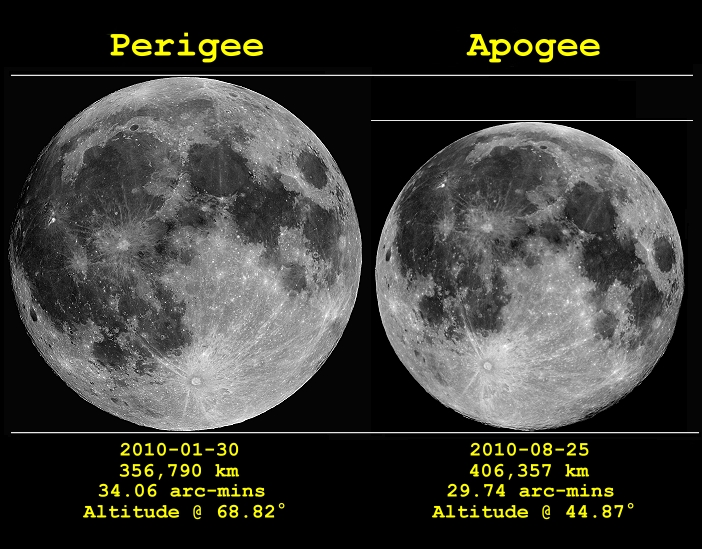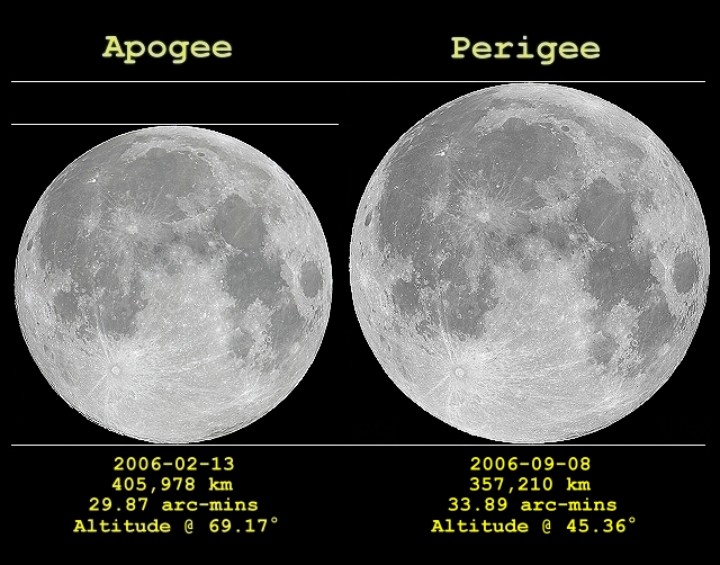The angular size (apparent diameter) of the Moon varies with time. Its variation is somewhat faster than the phases cycles: sometimes the largest apparent Moon will coincide with a full moon, causing the so-called "
Supermoon"

The difference between a small (apogee) Moon and a big (perigee) Moon is about 13%. Examples are easily found:



Pictures typically depict a full moon because that's more spectacular and makes it easier to compare, but they could be made with any visible phase.
This kind of photos is quite easy to make, photographing the Sun is tricky and even dangerous if done wrong, but for the Moon you only need a decent DSLR and long-focus lens to get this kind of pictures.
Two things to note:
* When the Moon appears bigger, it appears bigger for everyone, wherever they are on Earth
* The angular size of the Moon doesn't vary significantly as it moves through the sky
Now, from the wiki (
https://wiki.tfes.org/Moon) :
The Moon is a revolving sphere. It has a diameter of 32 miles and is located approximately 3000 miles above the surface of the earth.
Using these values, for a Moon that's directly overhead, we calculate an angular size of about 0.611 degress or 36.6 arcminutes (
https://rechneronline.de/sehwinkel/angular-diameter.php ). That's slightly above the observed largest Moon but in the right ballpark.
But for a Moon that's above a point 5000 miles away, the distance from the observer is sqrt(3000^2+5000^2) (Pythagorus) = 5830 miles. That gives us an angular diameter of 0.314 degrees or 18.8 arcminutes. Half as small. Such a variation has never been observed anywhere, not even at different times, and certainly not from two places at the same time
On a flat Earth with a close Moon:
* What causes the variation of the apparent size of the Moon for every observer on Earth over a cycle of about 27 days, slightly shorter than the cycles of lunar phases?
* What causes the Moon to have an apparent size that's not significantly different whether it's 3000 or 6000 miles away (without ever distorting its shape)?